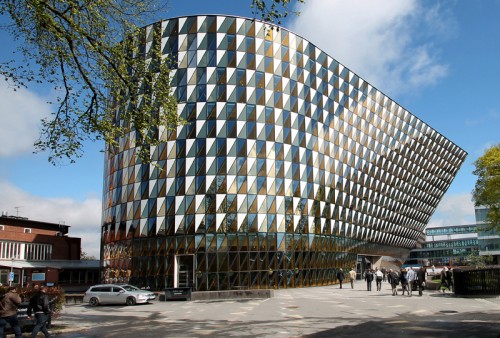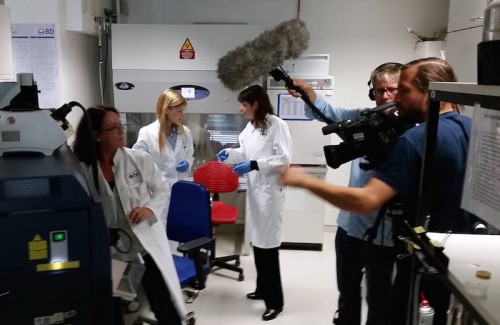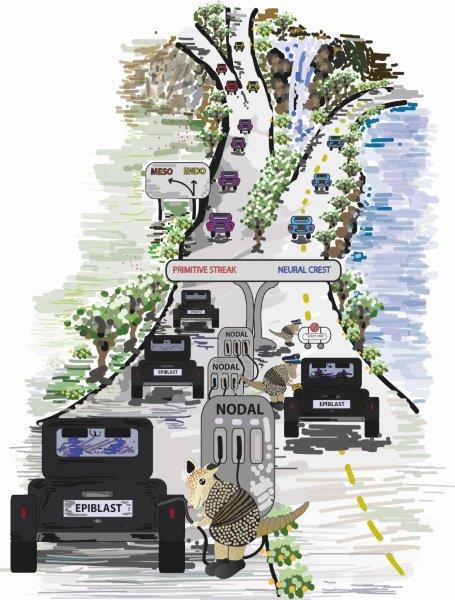EuroStemCell newsletter May 2015: partners in focus
Posted by Kate Doherty, on 3 June 2015
EuroStemCell is a project funded by the EU that aims to help European citizens make sense of stem cells. It’s now in its third iteration, and has many more partners this time around. One of the benefits of this is more stories to tell – of interesting research happening all over Europe.
This month we have lots of news from our partners to share: three new films from Germany, new research from Cambridge, Denmark and the Netherlands, a public event taking place as part of the ISSCR meeting next month in Stockholm, and some recently published interviews with partner scientists.
As ever, we’re keen to hear from readers of The Node – on Twitter, Facebook, or via our website. You can get involved as a writer or translator, tell us about the stem cell events you’re involved in, make comments or suggestions, or just say hello! And for regular stem cell news, why not subscribe to our monthly newsletter?
Stem Cells and the Ageing Brain: Public Event, Stockholm, 23 June
 We’ve been working with the ISSCR, and with European stem cell projects PluriMes, HumEn, ThymiStem and NeuroStemcellRepair, on a public event to coincide with the ISSCR meeting in Stockholm next month. It kicks off with an informal, interactive reception, followed by a moderated conversation between four leading scientists on stem cells and the ageing brain, with questions and comment from the audience. This free event offers a unique opportunity to hear, discuss and ask questions about what is happening in this fascinating field.
We’ve been working with the ISSCR, and with European stem cell projects PluriMes, HumEn, ThymiStem and NeuroStemcellRepair, on a public event to coincide with the ISSCR meeting in Stockholm next month. It kicks off with an informal, interactive reception, followed by a moderated conversation between four leading scientists on stem cells and the ageing brain, with questions and comment from the audience. This free event offers a unique opportunity to hear, discuss and ask questions about what is happening in this fascinating field.
New science films: the good, the bad and the future of stem cells
 Three new films produced by the German Stem Cell Network focus on three scientists and their research: on blood, cancer and neuronal stem cells. Watch the films in English or German, featuring Anthony D. Ho, Andreas Trumpp and Magdalena Götz, and find out more about why and how they were made.
Three new films produced by the German Stem Cell Network focus on three scientists and their research: on blood, cancer and neuronal stem cells. Watch the films in English or German, featuring Anthony D. Ho, Andreas Trumpp and Magdalena Götz, and find out more about why and how they were made.
Unique technology combination pinpoints the genetic signature of a blood stem cell
Although all the cells in a colony of blood cells may look alike, they may have different functions. Tools to track and analyse individual stem cells within a cell population like this can help us better understand how the blood system works, and may have implications for cancer research.
New clues into how stem cells get their identity
 Scientists at DanStem, the Danish Stem Cell Centre, University of Copenhagen have identified one mechanism that explains how some stem cells choose to become a given cell type: the cells combine specific sets of proteins at precise positions along the DNA. When these particular groups of proteins are combined, the gates are opened so that certain groups of genes can now be used, driving the cells towards a new identity.
Scientists at DanStem, the Danish Stem Cell Centre, University of Copenhagen have identified one mechanism that explains how some stem cells choose to become a given cell type: the cells combine specific sets of proteins at precise positions along the DNA. When these particular groups of proteins are combined, the gates are opened so that certain groups of genes can now be used, driving the cells towards a new identity.
Organoids for personalized cancer treatment
Two studies published in Nature and Cell this month show that organoids, miniature organs that can be cultured in a dish, could be crucial for personalized treatment of cancer.
Jobs, events, prizes
Don’t forget to check our events calendar for a list of upcoming stem cell events, and for those working in the field, keep an eye on our listings of European stem cell jobs.
The French Générale de Santé Foundation International Prize 2015 for Research in Cell Therapy and Regenerative Medicine may also be of interest to the research community. This prize rewards scientific excellence in the field of tissue regeneration, and you can find out more in the Call for Applications (PDF). Applications close on 21 June 2015.


 (No Ratings Yet)
(No Ratings Yet)